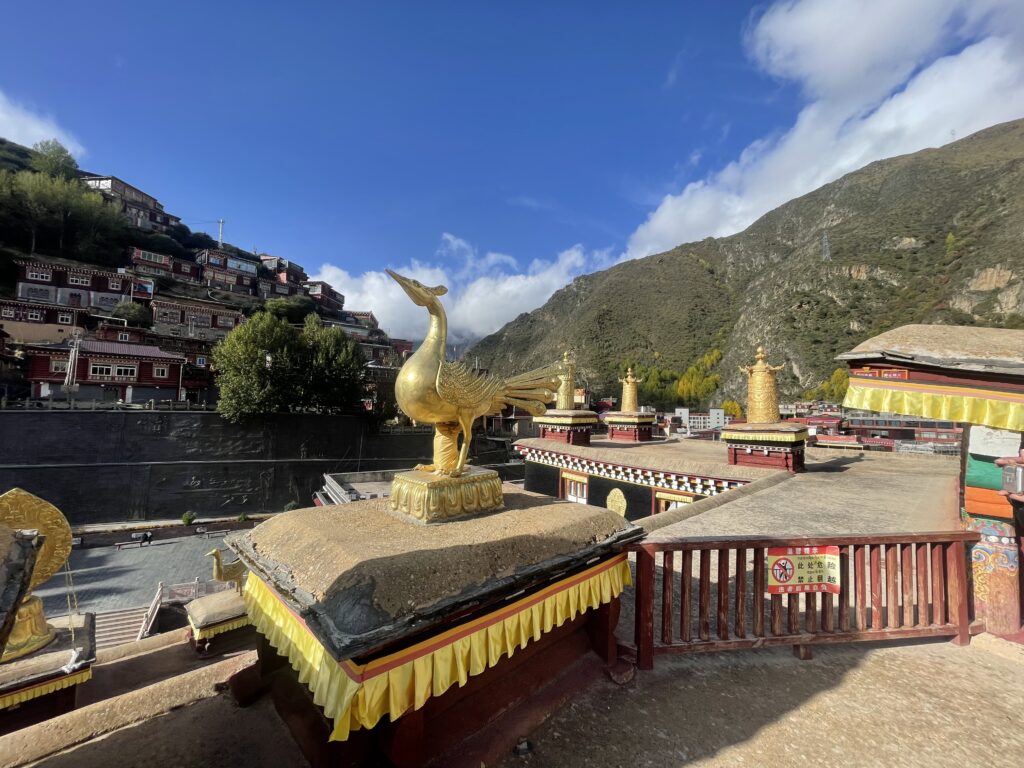
Dege County (德格县), located in the Garzê Tibetan Autonomous Prefecture in Sichuan Province, China, is a renowned center for Tibetan culture, religion, and history. Often referred to as the “Heart of Tibetan Culture,” Dege is famous for its ancient monasteries, stunning mountain scenery, and, most notably, the Dege Parkhang Sutra Printing House. Dege has long been a vital center for the preservation and dissemination of Tibetan Buddhist texts, making it one of the most important cultural sites in Tibetan regions.
The Derge lineage is said to stem from the Gar clan through Gar Tongtsen Yulzung, a minister of the Tibetan emperor Songtsen Gampo. His great-grandson Lhaje Jampai Pel moved from central Tibet to Khams in the early ninth century, settling his family in Ling. Likely originally patrons of the Bon, in the twenty-third generation the family first established a connection with the Sakya hierarchy, when the patriarch Zhonnu Dorje studied under Sakya Paṇḍita. His grandson, Sonam Rinchen, served Pakpa as an attendant and received a Yuan commission for Samar, to the south of present-day Derge. Pakpa called the site a place of “four accomplishments and ten virtues” (སྡེ་བཞི་དགེ་བཅུ།), a phrase that was shortened to sde dge and adopted by the family. Their seat moved several times before being established in its current location in the fifteenth century by Botar Lodro Tobden.
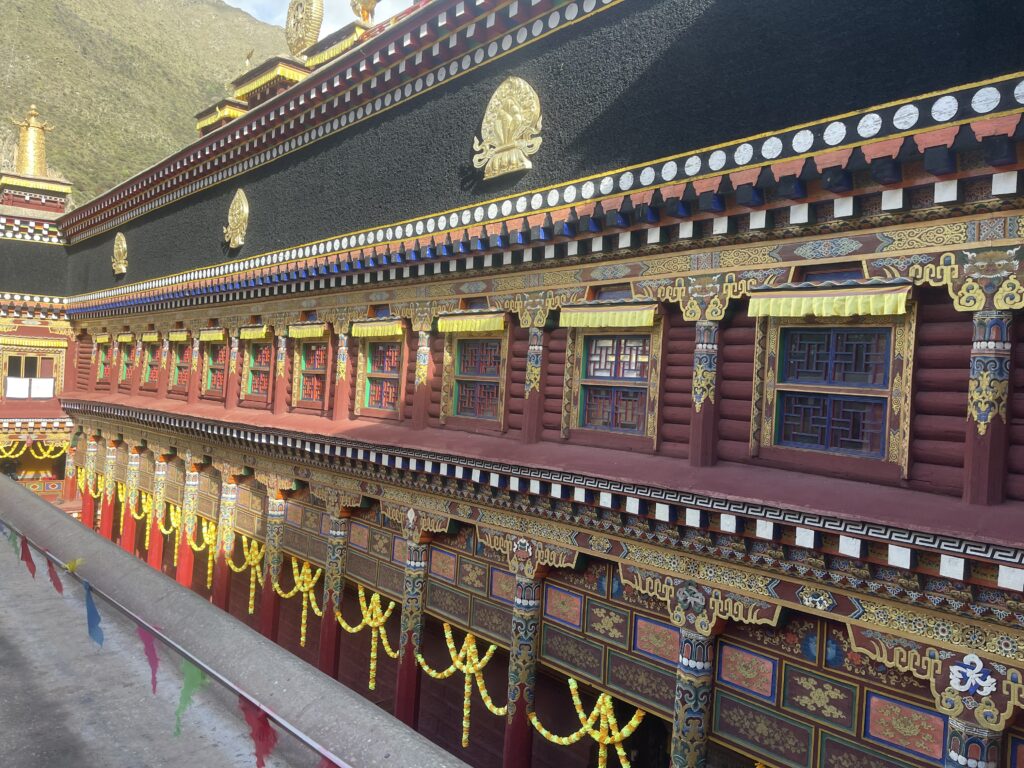
Dege Parkhang (Dege Sutra Printing House)
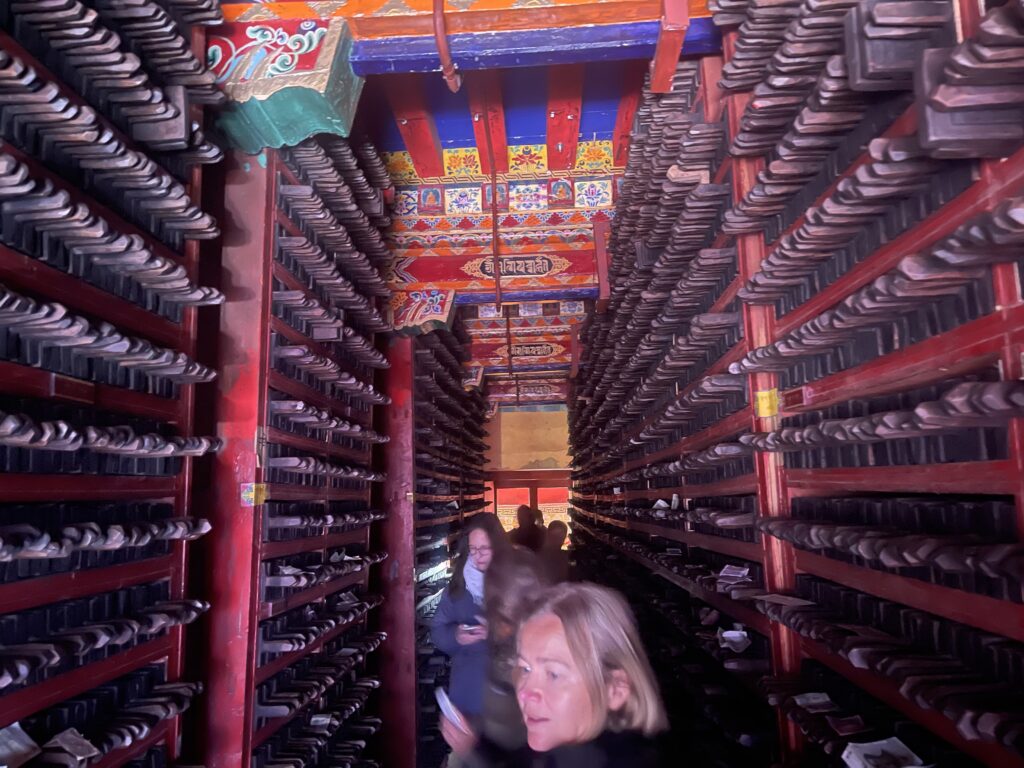
The Dege Parkhang Sutra Printing House (德格印经院) is a historic Tibetan printing house and is one of the most culturally significant sites in Tibetan Buddhism. Built in 1729, it remains one of the oldest and largest printing houses of its kind.
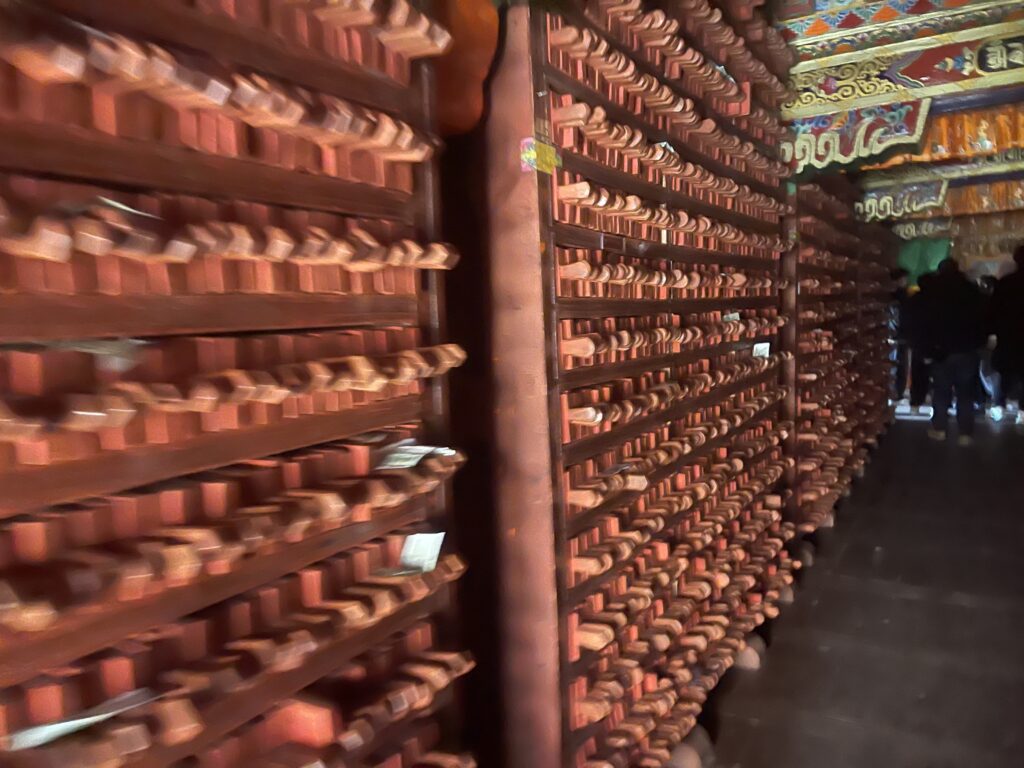
Cultural Heritage: The Dege Parkhang houses over 300,000 wooden printing blocks, preserving ancient Tibetan Buddhist texts, cultural records, and traditional art forms.
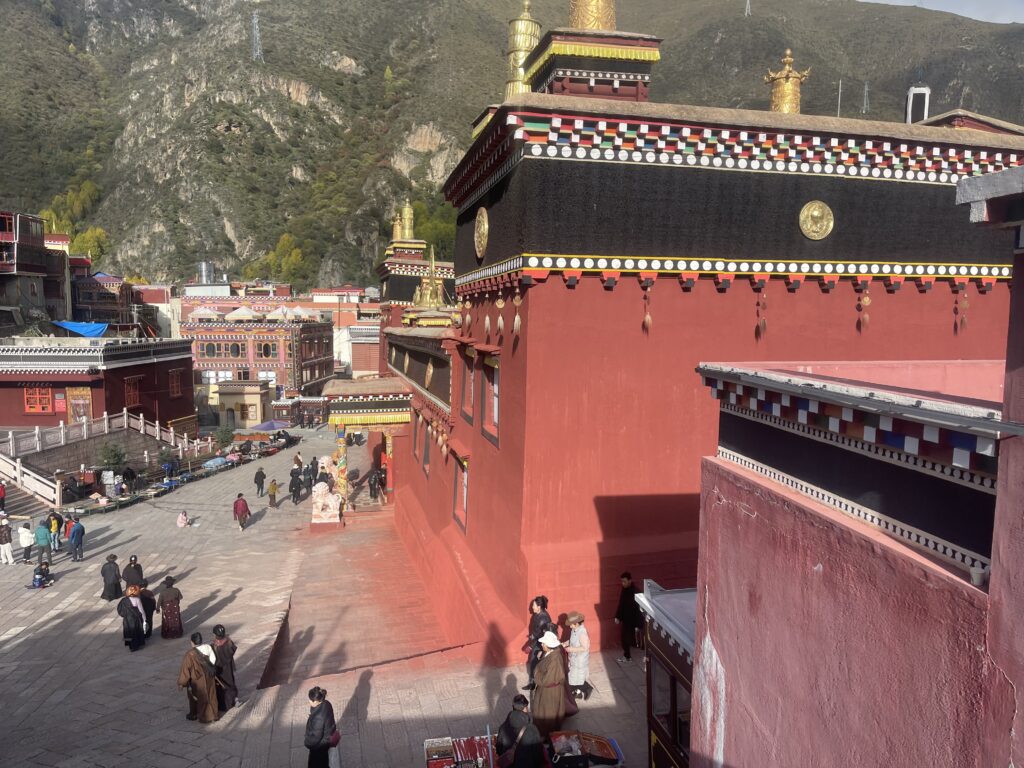
Traditional Woodblock Printing: Visitors can watch the meticulous process of woodblock printing, which is still done by hand by skilled Tibetan artisans. The smell of ink and the sound of printing create a unique atmosphere, connecting visitors with centuries of Tibetan tradition.
Historic Manuscripts: The sutra printing house contains numerous Buddhist scriptures, philosophical texts, and historical documents that have been used for centuries by monasteries and scholars across the Tibetan world.
Gengqing Monastery
Gengqing Monastery (更庆寺), located near the Dege Parkhang, is one of the largest and most significant Gelugpa (Yellow Hat) sect monasteries in the region. The monastery was founded in the 15th century and has a long history as a spiritual center.
Monastic Life: Visitors can observe the daily routines and religious practices of the monks, including chanting, meditation, and ritual ceremonies.
Architectural Beauty: Gengqing Monastery is known for its Tibetan architecture, colorful murals, prayer flags, and intricate statues of Buddha and various deities.
Views Over Dege Town: The monastery’s location offers sweeping views over Dege and the surrounding valley, making it a perfect spot for photography and reflection.
Dzogchen Monastery
Located approximately 100 kilometers from Dege Town, Dzogchen Monastery is one of the six main monasteries of the Nyingma school of Tibetan Buddhism. It is an essential center for Tibetan Buddhist education and practice.
Meditation and Philosophy: Dzogchen Monastery is an important center for the study of Tibetan Buddhist philosophy and meditation practices, attracting students and practitioners from all over Tibet and beyond.
Scenic Location: The monastery is surrounded by a stunning mountainous landscape, providing a serene and inspiring environment for spiritual practice.
Traditional Rituals and Festivals: Visitors can witness traditional Tibetan rituals and ceremonies, which take place regularly at the monastery.
Yulong La Mountain Pass
The Yulong La Mountain Pass is a high-altitude mountain pass offering breathtaking views of the snow-capped peaks, rugged terrain, and lush valleys around Dege.
Scenic Beauty: The pass offers panoramic views of the surrounding mountains, including views of the Chola Mountain Range and glaciers in the distance.
Photography and Trekking: This is a popular spot for photographers and trekkers who come for the beautiful landscapes, especially during sunrise and sunset.
Sacred Tibetan Site: Yulong La is considered a sacred place by local Tibetans, who often perform offerings and prayers at the pass. The area is adorned with colorful prayer flags and mani stones (stones engraved with Buddhist prayers).
Chola Mountain (Que’er Mountain)
The Chola Mountain Range, also known as Que’er Mountain, is a striking range that cuts through Dege County. It is known for its rugged beauty, glaciers, and challenging trekking routes.
Mt. Que’er: The highest peak in the Chola Range, Que’er Mountain is a popular destination for climbers and trekkers, with routes that vary in difficulty.
Glaciers and Lakes: The Chola range is home to several glaciers and glacial lakes, adding to the area’s natural beauty.
Biodiversity: The mountain range supports various wildlife and plant species, including Tibetan antelope, snow leopards, and unique alpine flowers.
Dege Town
The town of Dege itself is a lively hub of Tibetan culture and traditions. It is an excellent place to experience the unique customs, language, and daily life of the local Tibetan people.
Markets and Handicrafts: The town has traditional markets where locals sell Tibetan handicrafts, including prayer wheels, jewelry, Thangka paintings, and woolen products.
Local Cuisine: Tibetan food is prevalent, with staples such as yak butter tea, tsampa (roasted barley flour), and momos (dumplings). Trying local dishes provides a glimpse into Tibetan daily life.
Festivals and Cultural Events: Dege hosts several Tibetan festivals throughout the year, including Losar (Tibetan New Year) and other Buddhist ceremonies, allowing visitors to experience the vibrant local culture.
Tips for Visiting Dege County
- Best Time to Visit: The best time to visit Dege is from late spring to early autumn (May to September), as winters are cold and travel conditions can be challenging.
- Altitude Considerations: Dege is at a high elevation, so visitors should take precautions to avoid altitude sickness. Acclimatizing gradually, staying hydrated, and avoiding physical exertion initially is recommended.
- Getting There: Dege is remote, and reaching it requires a long drive from Kangding or Chengdu through mountainous terrain. The journey offers scenic views but can be strenuous, so travelers should be prepared for a rugged adventure.
- Cultural Sensitivity: Dege is a deeply religious area, so visitors should show respect for local customs, especially at religious sites. Always ask permission before taking photos, particularly of monks and ceremonies.
- Accommodation: While accommodation options in Dege are limited to guesthouses and smaller hotels, they are comfortable enough for short stays. It’s best to book accommodations in advance during peak travel seasons.
- Packing Essentials: Warm clothing is essential due to the high altitude and cold temperatures, even during summer months. Comfortable walking shoes are also recommended for exploring monasteries and hiking in mountainous terrain.
Dege County is a remarkable destination for travelers interested in Tibetan culture, Buddhist spirituality, and natural beauty. With its ancient printing house, historic monasteries, breathtaking mountain landscapes, and vibrant local traditions, Dege offers a unique opportunity to explore one of the last remaining centers of traditional Tibetan culture. From watching the woodblock printing process at the Dege Parkhang to trekking through the Chola mountains, every aspect of Dege reflects its rich cultural and spiritual heritage.
 Tibet World Travel Tibet Tour, Tibet Trip, Tibet Travel, Tibet Train, Tibet Trekking,
Tibet World Travel Tibet Tour, Tibet Trip, Tibet Travel, Tibet Train, Tibet Trekking,
